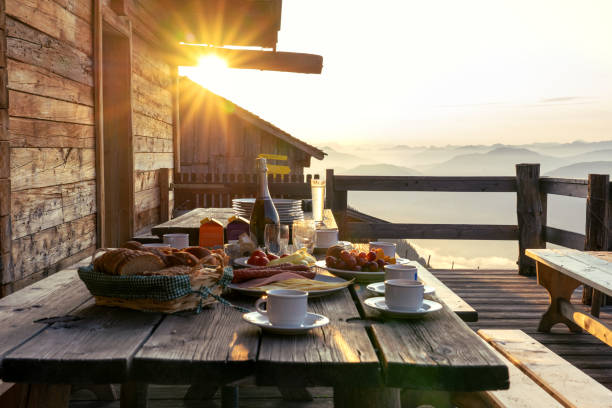Diving into the Flavors of Alpine Cuisine: Discovering the Marvels of Mountain Food
The mountainous regions of the world, from the Swiss Alps to the rugged peaks of Tibet, are home to some of the most fascinating and flavorful cuisines in the world. These high-altitude areas are not just breathtakingly beautiful but are also rich in unique culinary traditions that have evolved over centuries. Let's embark on a journey to discover the marvels of mountain food, its origins, characteristics, and why it's gaining popularity worldwide.

A Brief Look into the Origins of Alpine Cuisine
Mountainous regions have always been isolated due to their terrain, leading to a cuisine that heavily relies on locally sourced ingredients. Farmers in these regions have cultivated hardy crops and raised robust animals for centuries, leading to a rich, hearty cuisine that reflects the landscapes they originate from. From the Swiss fondue, a rich cheese dish, to the Tibetan tsampa, a roasted barley flour staple, alpine cuisine is a delightful showcase of simplicity and resourcefulness.
Characteristic Features of Mountain Food
Mountain cuisine is characterized by high-energy, sustaining foods that are meant to fuel the body in cold, harsh climates. Ingredients such as potatoes, cheese, and cured meats are common, often prepared in stews, pies, or roasts. Moreover, preservation methods such as pickling, smoking, and drying are frequently used, resulting in a cuisine that is rich in preserved foods with intense flavors.
Rising Popularity of Alpine Cuisine
In recent years, we’ve witnessed a surge in the popularity of alpine cuisine worldwide. Chefs and food enthusiasts are drawn to its rustic simplicity, deep flavors, and the stories of resilience and adaptability that it represents. The allure of comfort food that warms the soul, combined with the appeal of farm-to-table dining, is making mountain cuisine a gastronomic trend to watch out for.
Innovative Touches to Traditional Recipes
While traditional alpine dishes are soulful and delicious, creative chefs are adding innovative touches to these recipes. They are reimagining mountain food, adding their unique spins, and presenting them in new, exciting ways without losing the essence of the original recipes. This fusion of tradition and innovation is creating a new wave of interest in alpine cuisine.
Mountain Beverages: More than Just Warming Liquids
Mountain beverages are an integral part of alpine cuisine, offering more than just warmth. From the spiced mulled wines of Europe to the butter tea of Tibet, these beverages are packed with flavors and are often steeped in tradition. They are a testament to the ingenuity of mountain people, who have mastered the art of creating delightful drinks with limited resources.
Fascinating Facts about Mountain Cuisine
- Mountain cheese, a staple in alpine cuisine, is made from the milk of cows that graze on high-altitude pastures, giving it a distinct flavor.
- Many alpine dishes are served in a communal setting, reflecting the close-knit nature of mountain communities.
- The use of spices in mountain cuisine is often minimal, allowing the natural flavor of the ingredients to shine through.
Mountain cuisine, with its hearty flavors and comforting dishes, is a testament to the resilience of the communities that have thrived in these challenging terrains. This culinary journey into the world of alpine food offers us a glimpse into their way of life, their traditions, and their love for the land they call home. As we explore these unique flavors and dishes, we not only enrich our palates but also gain a deeper appreciation for the diverse culinary traditions that our world has to offer. Let’s celebrate and embrace these culinary treasures, one dish at a time.






